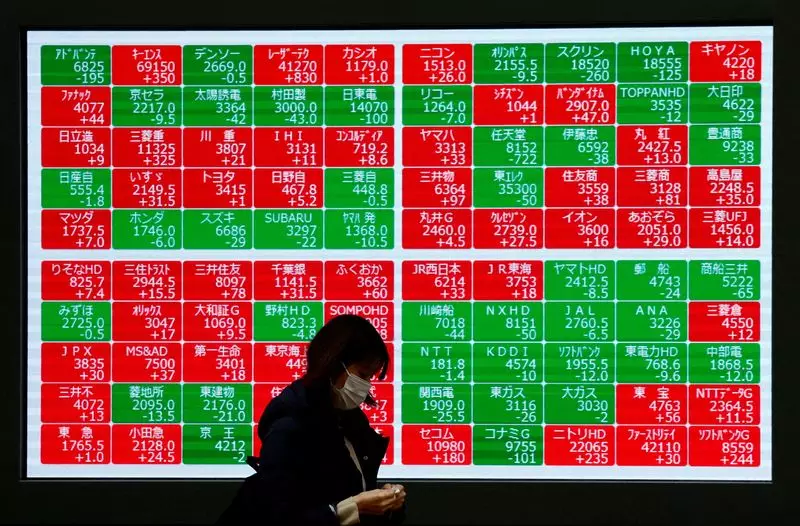In the realm of Asian markets, the recent surge in global bond yields has sent shockwaves through financial institutions and investors alike. The strengthening dollar and subsequent tightening of financial conditions have left many wary of the future. As economic data remains light in this region, investors are left to speculate on the implications of this growing trend on their portfolios.
The MSCI World equity index suffered a 1% drop, while the MSCI Asia ex-Japan index slumped a staggering 1.6% – its most significant decline in six weeks. The somber mood was further exacerbated by Wall Street’s plunge into the red. Risk appetite is clearly on the decline as investors grapple with the uncertainty of the situation.
Looking ahead, the regional calendar offers minimal market-moving signals. The Reserve Bank of Australia’s deputy governor is scheduled to speak, alongside the release of Australian home building approvals data and Taiwan’s revision of first-quarter GDP. However, Friday presents a flurry of top-tier releases including Chinese PMIs, Tokyo inflation data, and India’s Q4 GDP – all preceding the highly anticipated U.S. PCE inflation for April. Market participants must navigate these turbulent waters with caution.
The surge in global bond yields is unmistakable. The 10-year Japanese Government Bond yield is currently at 1.075%, a level not seen since late 2011. Despite the attractive yields, the yen is depreciating against the dollar, hinting at potential intervention by Japanese authorities. U.S. Treasury yields have also been climbing, with the 10-year yield reaching 4.64% – the highest in a month. The dollar index surged by 0.5% in response, cementing its status as the preferred currency for investors.
Amidst the turmoil, China’s economic prospects have garnered attention. The International Monetary Fund revised its GDP growth outlook for China, projecting growth rates of 5% and 4.5% for 2024 and 2025, respectively. However, concerns linger about the long-term sustainability of this growth trajectory. The IMF’s warning about a possible slowdown to 3.3% by 2029 due to demographic shifts and productivity constraints underscores the challenges ahead. Additionally, China’s economic surprises index reflects a downward trend, hinting at potential headwinds in the near future.
On the other hand, Japan’s economic surprises index has taken a drastic turn for the worse. From a positive reading at the beginning of May to a negative reading on Wednesday, the country’s economic outlook appears bleak. This sudden shift raises concerns about Japan’s economic recovery and future growth prospects in the face of global economic uncertainties.
The impact of rising global bond yields on Asian markets is evident. The surge in yields, coupled with the strengthening dollar, has rattled investors and sent shockwaves through financial markets. As market participants navigate this challenging landscape, it is crucial to stay informed and proactive in managing risk exposures. The coming days will test the resilience of Asian markets and the ability of investors to weather the storm of uncertainty.


Leave a Reply